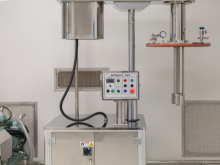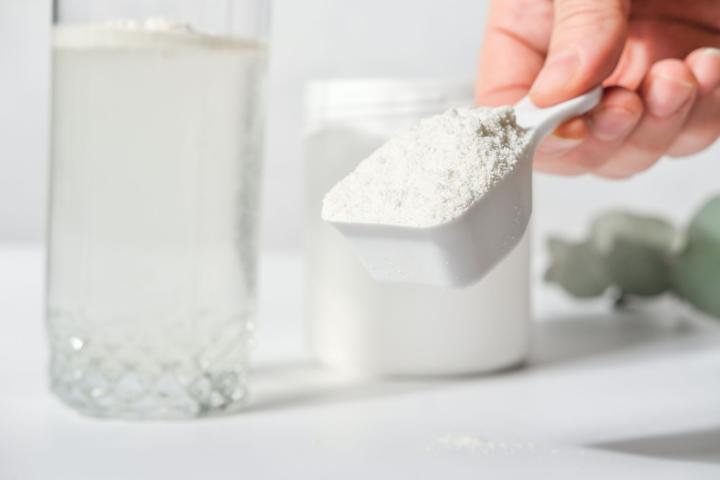Spray drying transforms liquids into precisely controlled powders, making it indispensable across pharmaceuticals, food science, and materials research. Whether you're improving drug bioavailability through amorphous solid dispersions or encapsulating sensitive active ingredients, success depends on understanding the critical parameters that govern this complex process.
Laboratory-scale spray drying presents unique challenges. The interplay of temperatures, flow rates, and feed properties significantly impacts yield, consistency, and quality. Minor variations can lead to product degradation, particle stickiness, or inconsistent results - costly setbacks in R&D environments.
This guide provides actionable strategies for optimizing your spray drying process, troubleshooting common pitfalls, and maintaining equipment for reproducible results.
Master the control panel
Successful spray drying requires precise control of interconnected variables. These parameters don't operate independently - they form a dynamic system where adjusting one factor necessitates compensating changes in others.
The foundation of quality

- Purpose: Drives solvent evaporation and determines drying capacity.
- Typical range: 100-220°C (varies by material sensitivity).
- Key consideration: Balance efficiency against thermal degradation risk.
Higher inlet temperatures accelerate drying but can damage heat-sensitive materials like APIs, proteins, or vitamins. The goal is finding the optimal temperature that ensures complete drying while preserving product integrity.

- Purpose: Indicates final particle temperature and residual moisture
- Critical rule: Keep below material's glass transition temperature (Tg) or its degradation point. + ~20°C
- Control: Adjusted indirectly via inlet temperature, feed rate, and airflow
Outlet temperature directly impacts stickiness prevention. Advanced spray dryers with outlet temperature control capabilities provide additional precision for temperature-sensitive processes, ensuring particles remain in a stable, non-sticky state.
Temperature monitoring pro tip
Track the temperature differential (ΔT = Tin - Tout) as a real-time indicator of drying efficiency. A sudden drop in ΔT often signals nozzle issues or process deviations before they become major problems.
An alternative method is to monitor the outlet temperature. A stable outlet temperature typically indicates smooth operation, while fluctuations may suggest issues such as nozzle blockages, sample feed problems, or other issues.
Feed rate optimization
Start conservatively with lower feed rates and gradually increase while monitoring:



Warning signs of excessive feed rate:



Airflow and atomization balance
Drying airflow: Must supply sufficient heat while ensuring proper particle transport to collection. Too high can reduce residence time; too low leads to inadequate drying.
Atomization settings: For two-fluid nozzles, atomizing gas pressure directly controls droplet size, which determines final particle size distribution. Smaller droplets dry faster, while larger droplets take longer to dry and thus require sufficient residence time.
Equipment with features like pulse jet systems or needle knockers can maintain consistent atomization over extended periods, reducing the frequent cleaning that disrupts long production runs.
Getting your feed right
The quality of your final powder begins with feed preparation. Consistent, well-characterized feeds prevent operational issues and ensure reproducible results.
Managing key feed properties
Getting your feed right
The quality of your final powder begins with feed preparation. Consistent, well-characterized feeds prevent operational issues and ensure reproducible results.
Managing key feed properties
| Property | Typical price range | Price drivers |
| Viscosity | Generally below 100 mPa·s (CPS) for optimal atomization |
|
|
Concentration
| Start with 5-10% w/v for new formulations |
|
Essential preparation steps:
- Ensure complete dissolution for solutions.
- Achieve uniform dispersion for suspensions with continuous agitation.
- Maintain consistent stirring during processing for suspensions.
Preventing stickiness and caking
Stickiness occurs when particle temperature exceeds the material's glass transition temperature, causing adhesion to chamber walls and poor powder flow.

Prevention strategies:
- Add drying aids: Incorporate high-Tg materials like maltodextrins, gum arabic, or modified starches.
- Temperature management: Maintain outlet temperature below Tg + 20°C.
- Moisture control: Ensure efficient drying to minimize residual water content.
High-risk materials: Sugars (fructose, glucose, sucrose) and organic acids (citric, malic) commonly cause stickiness due to low glass transition temperatures.
No more spray drying headaches
The top 5 spray drying problems - and how to fix them
No more spray drying headaches
The top 5 spray drying problems - and how to fix them
| Problem | Quick fixes | Long-term solutions |
| Clogged nozzles |
|
|
| Poor yield/product loss |
|
|
| Inconsistent particle size |
|
|
| Product stickiness |
|
|
| High moisture content |
|
|
Modern spray dryers with integrated pulse jet or knocker systems can clear minor blockages without stopping the process, significantly reducing downtime during long runs. Equipment designed with bottom collection (rather than side-arm collection) can achieve yields of 90%+ by improving particle flow dynamics.
Maintenance that actually prevents problems
Consistent results depend on properly maintained equipment. Establish a routine that prevents problems rather than reacting to them.
Consistent results depend on properly maintained equipment. Establish a routine that prevents problems rather than reacting to them.
| Frequency | Quick fixes | Long-term solutions |
| Daily | Basic inspection |
|
|
Weekly | Deep cleaning |
|
| Monthly | System health |
|
Critical maintenance notes
- Document everything: Maintain detailed logs of maintenance activities, part replacements, and observed issues.
- Preventive replacement: Replace wear items like seals, gaskets, and tubing based on condition rather than waiting for failure.
Equipment with electric lift mechanisms eliminates the manual handling required for chamber removal.
Safety essentials

Personal protection
- Always wear: Safety goggles, gloves, lab coat, and appropriate respiratory protection.
- Ensure adequate ventilation: Especially critical when processing organic solvents or fine powders.
- Ground equipment properly: Prevents static buildup that could ignite solvent vapors or dust.

Organic solvent safety
When processing with flammable solvents, closed-loop systems with inert gas circulation are essential. These systems:
- Eliminate oxygen to prevent combustion.
- Monitor and control 02 concentration.
- Include integrated solvent recovery for environmental and cost benefits.
- Provide safety interlocks preventing operation under unsafe conditions.
Never attempt to process flammable organic solvents without proper safety systems - the explosion risk is severe and potentially fatal.
Your path to consistent, high-quality results
1. Start with feed preparation
Consistent, well-characterized feeds prevent most operational issues

2. Maintain detailed logs
Documentation enables reproducible results and effective troubleshooting.

3. Monitor temperature differentials or outlet temperature
ΔT provides real-time insight into process efficiency

4. Invest in preventive maintenance
Regular cleaning and parts replacement prevent costly downtime.

5. Prioritize safety systems
Proper equipment protects personnel and enables processing of challenging materials.
1. Feed preparation and formulation
- Viscosity check. High‐viscosity feeds can clog nozzles.
- Solids content. The more solids you have, the thicker your feed and the more carefully you need to handle it.
- Prefiltration. A quick pass through a filter can remove debris that might block your nozzle.
1. Start with feed preparation
Consistent, well-characterized feeds prevent most operational issues

2. Monitor temperature differentials or outlet temperature
ΔT provides real-time insight into process efficiency

2. Optimizing temperatures and airflow
- Inlet temperature. High enough to dry quickly, but not so high that you scorch or degrade your material.
- Outlet temperature. Helps you gauge how fully dry your powder is.
- Airflow. More airflow can mean faster drying, but also smaller droplets might get carried away before fully forming.


3. Maintain detailed logs
Documentation enables reproducible results and effective troubleshooting.

4. Invest in preventive maintenance
Regular cleaning and parts replacement prevent costly downtime.

5. Prioritize safety systems
Proper equipment protects personnel and enables processing of challenging materials.
Moving forward
Optimizing laboratory spray drying requires patience, systematic approaches, and attention to detail. Focus on understanding the relationships between parameters rather than making isolated adjustments. With proper technique, maintenance, and safety practices, spray drying becomes a reliable tool for producing high-quality powders that advance your research objectives.
The investment in understanding these fundamentals pays dividends in reduced sample waste, improved yields, and more predictable results - ultimately accelerating your R&D timeline and reducing costs.

This guide provides general principles for laboratory spray drying optimization. Always consult your equipment manual and institutional safety guidelines for specific procedures and requirements.